The naming of the Onzoshi-bashi Bridge (2)
(cont.)
After walking along the riverside promenade, I arrived at the shrine.
However, I could not find the name of the shrine.
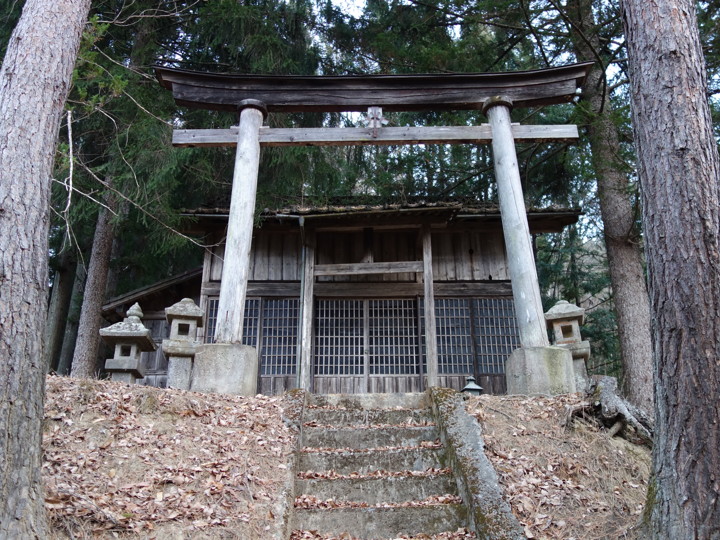
I also checked the stone lanterns, but in the end I could not find the name of the shrine. Or perhaps it was written somewhere but I overlooked it.
Considering the location, I think there is no mistake that this is the Onzoshi Shrine, but I can’t be sure.
I wasn’t sure, so I continued onwards along the promenade.
After walking about 100m, the path joined the road, so I walked the rest of the way back to the Onzoshi-bashi Bridge.
Looking downstream from the bridge.
Ah, I think this rock is 'Kame-iwa (Turtle rock)’. On the pictorial map, two turtle rocks were written, but the smaller rock on the left would make sense if it was called a 'turtle’. Is the big rock on the right the parent turtle?
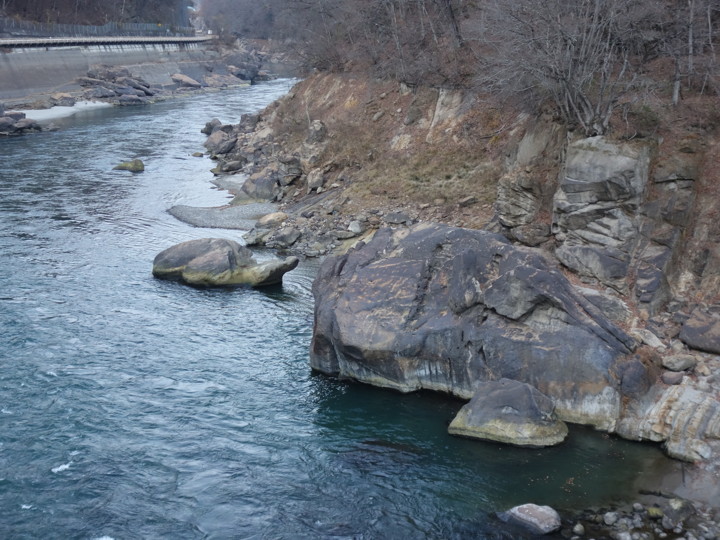
The faded signboard I saw last time too. The text is faintly visible, and two bridges are depicted – the new bridge and the old bridge. The road leading to the old bridge runs under the new bridge. The yellow letters are the ones I wrote on the photo.
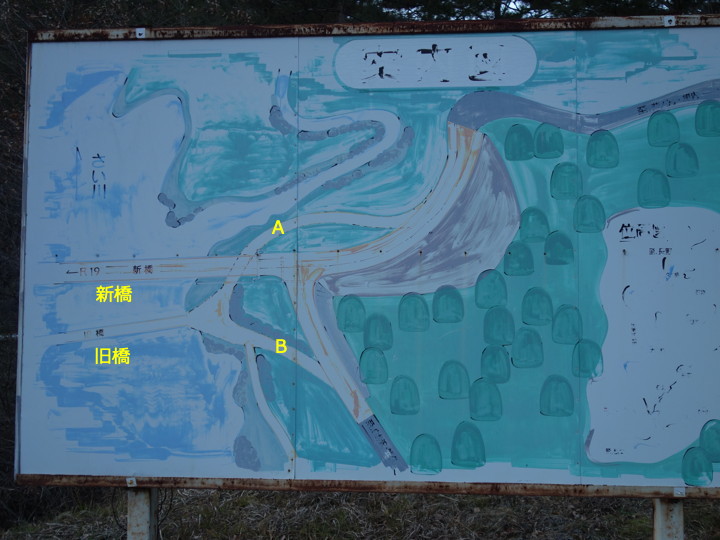
I looked under the bridge and saw that it was paved with asphalt, so I wondered if this was the road (A in the diagram) leading to the old bridge. As it is not high enough for people to pass through, it may have been path B in the diagram when work on the bridge started.
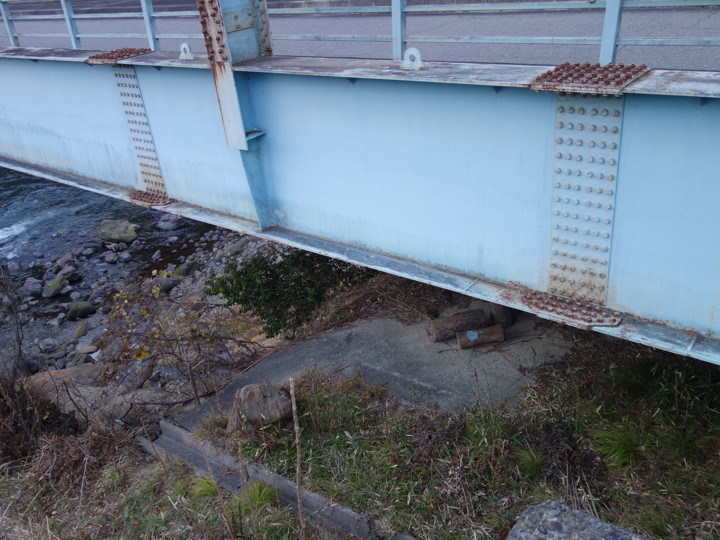
I also looked to the right of the bridge to see if the old path remained, but I couldn’t find the path clearly.
The area where the monument was erected seems to have been cleared with earth, so it may have been buried.
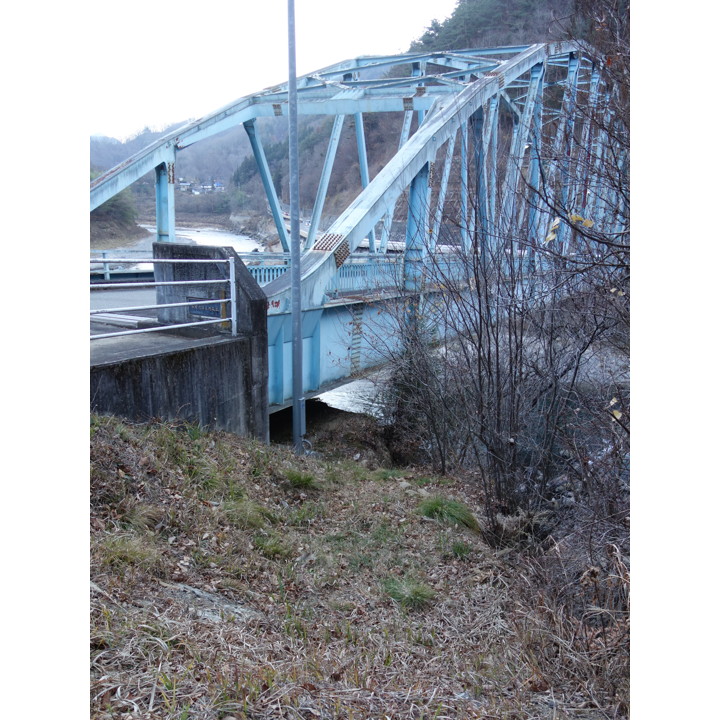
That was the end of the field survey.
****
Now, there was a shrine, but how should I check the name? Should I visit the neighboring houses and ask?
Oh, I think it might be written on a residential map.
****
Later in the day. I went to the library to browse residential maps.
However… there is no mention of the existence of a shrine.
Ooka Village merged with Nagano City in 2005, so I also browsed old residential maps from before the merger, but the shrine doesn’t exist on the map.
Let’s check other books.
In the Ooka Village History, historical edition (1998), a list of shrines drawn up in the Meiji era was included, but the name of Onzoshi shrine cannot be found.
Why? Even though the shrine exists in reality.
I searched for the name of Ooka Village and found a book called 'Hijiri, Ooka Village HIstory’ (autohor: Hyo Maruyama).
There I found the following sentence.
'It is said that Onzoshi Shrine in Etchgawa is an archaeological shrine associated with the Minamoto clan. According to the “Shinpu Touki (a book compiled by the Matsumoto clan)" (…omitted…) it is written that Minamoto no Noriyori was hiding in a place called Kanado at that time, when he was pursued from Kamakura and forced to leave Kanado Castle and arrive at Etchugawa. And eight members of Noriyori’s party were killed here.
It is said that wooden statues of Noriyori and his wife are enshrined.’
However, the author writes that this theory must not be true, as Noriyori must have died elsewhere.
As for Noriyori’s death, it is assumed that he was exiled to Izu and died there, but there are apparently other theories. Is that why this kind of legend was created and why the name Onzoshi was given to the shrine?
But, this statement does not confirm that the name of the shrine as it exists today is the Onzoshi Shrine.
When I got stuck and flicked through the book, I noticed that there were pictures at the beginning of the book. Looking at it, I found a photo of a shrine with the words 'Shrine (Onzoshi)’ written on it!
Although the Chinese characters used are different, this photo must be the Onzoshi shrine.
I don’t show the photo in the book here, but it is almost at the same angle as the next photo I took.
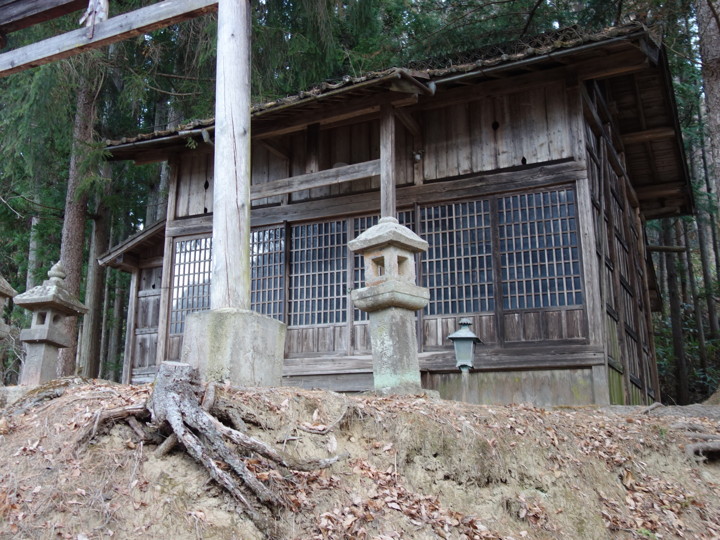
The position of the stone lanterns and the pillars of torii gate, the cleats of the sliding door and the pattern of the roof tiles are also identical.
In the photo in the book, there is a tree growing in front of the pillar of the torii gate, but it seems to have been cut down later and now there is a stump.
I have determined that the photo I took and the book’s Onzoshi Shirne are identical.
As the photo above is a crop, I have also included a photo showing the entire shrine.
I think it is safe to confirm that this shrine is the Onzoshi Shrine.
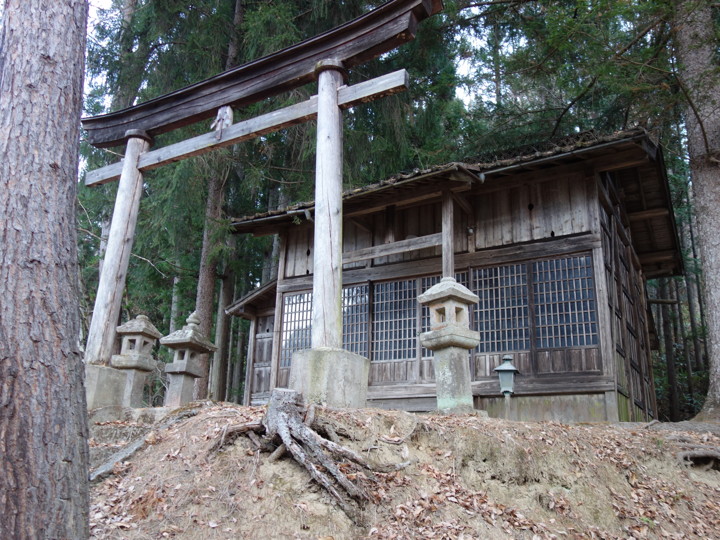
And the theory that the Onzoshi-bashi Bridge was named after the nearby shrine Onzoshi Shrine cannot be proven, but I thought it was believable in my mind.
[Reference]
'Hijiri, Ooka Village History’ Hyo Maruyama, 1976

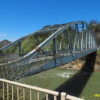
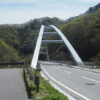
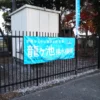
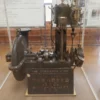
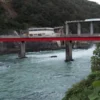
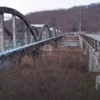
Discussion
New Comments
No comments yet. Be the first one!